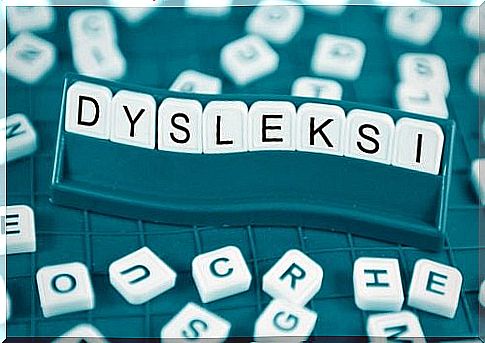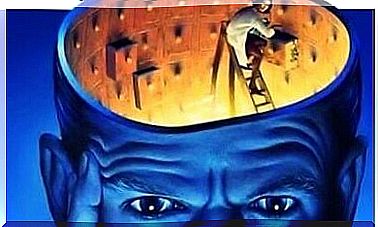Different Types Of Dyslexia – Different Symptoms

Dyslexia is a disorder that affects the ability to read and understand written language. It involves difficulty reciting the alphabet, naming letters, and analyzing and classifying sounds. Furthermore, if you have dyslexia, it is common to confuse, distort, invert, omit or add words. There is usually also a certain slowness and hesitation, along with problems with visual monitoring and comprehension. However, not everyone who has dyslexia suffers from all of these symptoms, and there are actually different types of dyslexia.
To understand different types of dyslexia, it is necessary to know that reading involves double processing. This means that our brain has two different ways of reading words, where one is visual and the other is phonological. The first of these, the visual route, consists of reading the word as a whole, and using our memory to recognize them. This can only be done with words we already know, since unknown words will not be stored in our memory. The phonological route involves reading through a grapheme / phoneme transformation and treating the words individually. This is very useful when reading unknown words.
So, if one of these routes is damaged, it will result in a certain type of dyslexia. In this article we will talk about the different types of dyslexia that occur when the functions that allow us to read are damaged. More specifically, we will look at visual dyslexia, auditory dyslexia, and audiovisual dyslexia.

Types of dyslexia
Visual dyslexia
People who suffer from visual dyslexia have a selective disability in their ability to read words that have an irregular pronunciation. This is a type of dyslexia that does not occur in all languages; because not all languages have words with irregular pronunciation. Spanish, for example, does not have an irregular pronunciation, but it does have Norwegian and English. An example of this type of dyslexia may be difficulty in pronouncing the word “train”, which is written with “o”, but is pronounced as an “å”.
Visual dyslexia indicates that there is damage to the visual route or direct access to words. People with dyslexia can read ordinary words perfectly, by translating graphemes into phonemes word for word. But with irregular words, this strategy is useless. They also have no problem reading non-existent words or fictitious words, which further help to prove damage on the direct path.
Another important aspect of this type of dyslexia is that the semantic capacity is not damaged. Even if dyslexics cannot read the word correctly, they can still understand it correctly if someone reads it aloud to them and pronounces it correctly. Therefore, the injury is localized only to the individual’s reading abilities.
Auditory dyslexia
People suffering from auditory dyslexia have a selective disorder in their ability to read unfamiliar words or non-existent words; while maintaining their ability to read familiar words. For example, they would have trouble reading “borønte”, but they can read the word “famous” without any problems.
This shows us that the damaged road is the phonological route. Therefore, people suffering from auditory dyslexia will not be able to translate words between grapheme to phoneme. Because of this, they will have trouble reading the non-existent words. Also words that they do not know before. On the other hand, since the direct route is completely intact, they have no problem reading familiar words.
In these individuals, there is also an extra degree of difficulty when reading functional words ( the, that, one , for example). This is probably because these words are very abstract and lack content. However, the results of the research are sometimes contradictory, and we must be careful with auditory dyslexia, as it can be more than an injury that affects the phonological route.

Audiovisual dyslexia
At first glance, it may seem that visual dyslexia and auditory dyslexia constitute the different possibilities with regard to types of dyslexia related to injuries in the dual process route. However, there is a third type of dyslexia, which is quite surprising. It is called audiovisual dyslexia. Despite its resemblance to auditory dyslexia, it has a defining and unique characteristic – semantic paralysis.
Semantic paralysis occurs when the person, instead of reading the written word, produces another word. But there is one that has a meaning that is related to the original word. For example, instead of the written word “daughter”, it is likely that the patient instead says the word “sister”. It is a very interesting phenomenon, which indicates the existence of injuries that affect how the person determines the semantics of different words.
Another important aspect, which can show us the extent of the semantic damage, is that the mental representation of the word shows the degree of difficulty in the person’s reading. Where the person has difficulty building a mental picture of the concepts involved, it will be reflected in a poorer reading ability. On the other hand, when these concepts are easy to represent mentally, reading skills will improve. This shows us that the person has difficulties when he / she searches for the word within the semantic network. Because of this, the more mental data available, the easier it is to find and read it.
Need for more research
Dyslexia is a complex disorder that gives us a lot of information about our ability to relate to language, and how this function works. Understanding the different categories or types of dyslexia helps us to understand the structure and functionality of the language. For this reason, extensive research and research is necessary if we want to have a deep understanding of basic and fundamental communication and to be able to discover the origin of possible errors in it.









